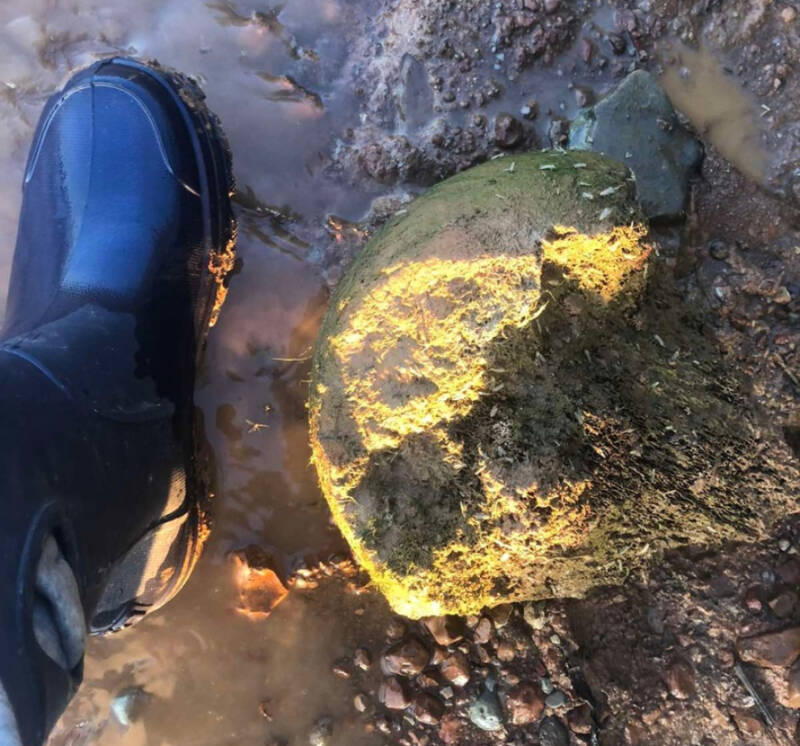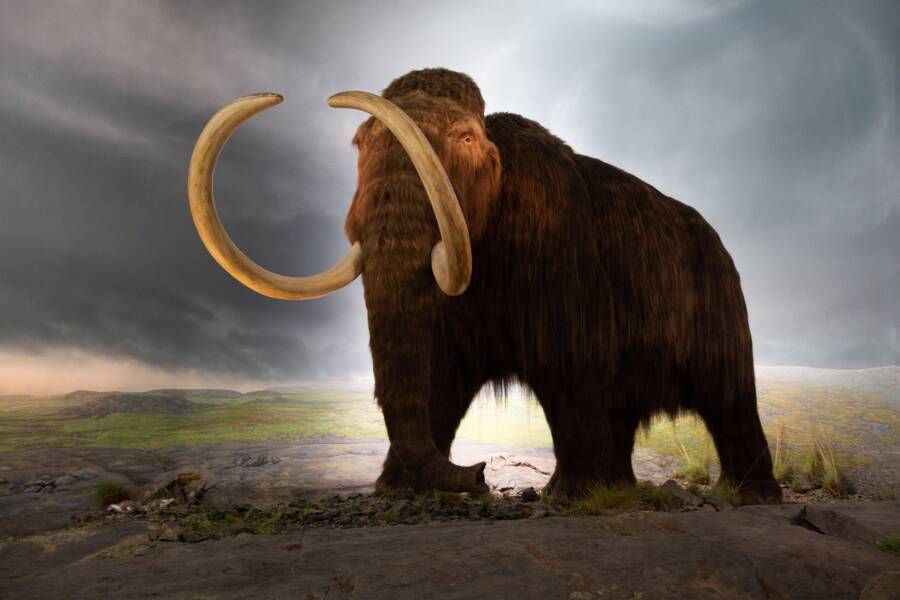Maryam Mirsaitova and her father stumbled across bones from a woolly mammoth, a bison, and a third animal that's yet to be identified.

R. MirsaitovaThe incredible discoveries were made along the banks of the Oka River near Novinki.
Maryam Mirsaitova was fishing with her father on the shores of the Oka River in western Russia when something caught her eye. The eight-year-old went to take a closer look and came across a number of strange objects.
Her father then submitted them to the nearby Nizhny Novgorod Museum-Reserve, where experts confirmed that Mirsaitova had found bones from a woolly mammoth, a bison, and a third unknown animal.
As Live Science reports, the bones were exposed by a recent landslide in the area. They include the condyle (knee joint) and lower tibia of a woolly mammoth and a vertebra from what appears to be a steppe bison.
Despite their age — the mammoth bones are estimated to be 100,000 years old — the bones are in fairly good condition. Museum staff told Russian media that they could even detect spongy tissue on the mammoth’s condyle bone.

Wikimedia CommonsWoolly mammoths went extinct some 10,000 years ago.
The woolly mammoth bones likely belonged to an adult of the species. As Live Science reports, woolly mammoths populated the cold regions of northern Europe and Asia starting around 700,000 years ago and North America starting around 100,000 years ago. Along the banks of the Oka River, where the fossils were discovered, woolly mammoths probably thrived until 10,000 years ago. But the end of the ice age meant woolly mammoths lost their habit and food source, and they may have been hunted by early humans.
Populations of woolly mammoths survived some 7,000 years longer on the isolated Wrangel Island in the Arctic but these creatures also died out some 4,000 years ago. Scientists have suggested in recent years that they may have finally been wiped out by a catastrophic weather event.
The vertebrae bone that Mirsaitova found along the shores of the Oka River likewise seems to belong to an extinct animal: the steppe bison. Live Science reports that they lived in Europe, Asia, and North America during the Pleistocene epoch (2.6 million to 11,700 years ago) before going extinct, though their descendants in Europe and North America survive to this day.

Robert Pawlicki/Wikimedia CommonsSteppe Bison went extinct some 10,000 years ago, though their modern descendants live in Europe and North America today.
As such, bones like these are priceless discoveries. They will be studied and then held by the Nature Department at Nizhny Novgorod Museum-Reserve.
But experts hope that others who stumble across woolly mammoth or steppe bison remains follow Mirsaitova’s example and report them. One of the most famous such discoveries in recent years was a mummified mammoth calf, later dubbed Lyuba, which was found on the Yamal Peninsula. But these remains were first traded for a snowmobile before they ended up in the hands of law enforcement and then were finally sent to a museum.
“Unfortunately, [discoveries] are left at home,” Galina Shalfitskaya, the head of the Nature Department at Nizhny Novgorod Museum-Reserve told Russian media. “And therefore I would like to appeal to everyone — if you find something, please bring it to the museum. Because it is important — for science, for history.”
After reading about the 100,000-year-old woolly mammoth bones discovered by an eight-year-old girl in Russia, see how gold miners stumbled upon a rare cache of hundreds of woolly mammoth bones while working in Canada. Or, see how one company is hoping to revive the woolly mammoth from extinction and return it to Siberia.





